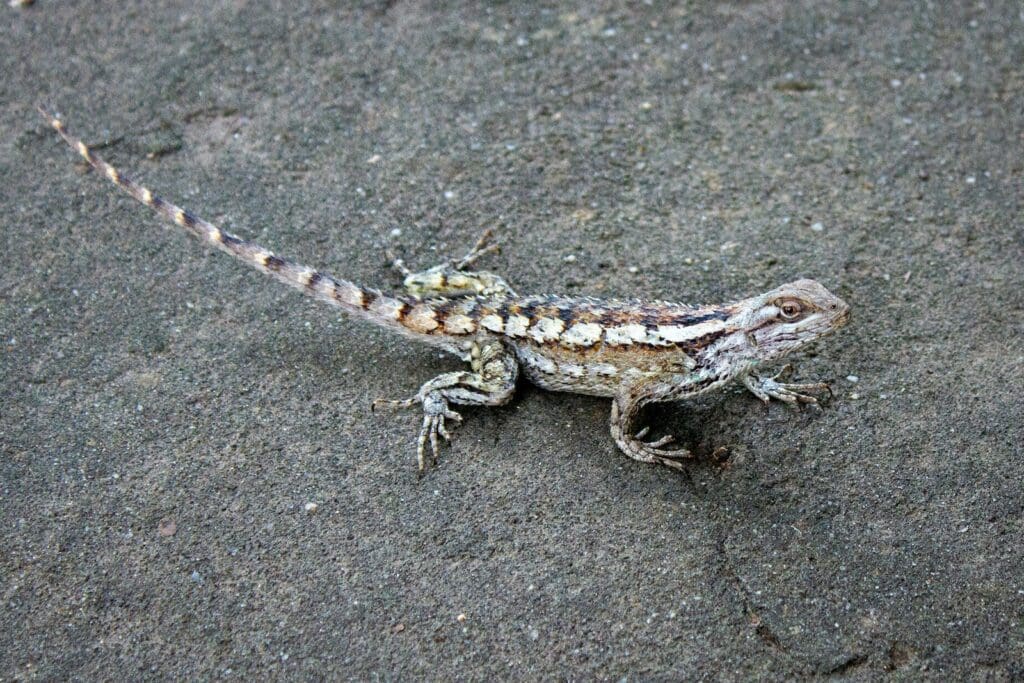
Discover Riverbank Wonders
Nestled in the heart of the city, the San Antonio River Walk is not just a haven for dining and shopping; it’s also a vibrant ecosystem teeming with natural beauty and a rich tapestry of flora and fauna. Visitors are invited to embrace the tranquility of the riverside trails and discover the array of plants and animals that call this urban oasis their home. The River Walk’s winding paths offer a unique opportunity to observe wildlife in their natural habitat, to immerse in the lush greenery, and to appreciate the peaceful coexistence of nature and city life.
As each season unfolds, the River Walk transforms, providing a dynamic backdrop for various activities and events that bring people closer to nature. Whether it’s the colorful display of spring blossoms, the lush summer greenery, the fiery hues of fall foliage, or the serene beauty of winter, every visit promises a new perspective on this cherished landscape. From bird watching to aquatic life encounters, the River Walk is a treasure trove for nature enthusiasts and casual visitors alike, offering educational and recreational experiences for all ages.
Key Takeaways
- The San Antonio River Walk is a natural sanctuary amidst the urban environment, rich in wildlife and plant life.
- Seasonal changes bring about diverse activities and striking visual transformations along the River Walk.
- The River Walk caters to a wide range of interests, from recreational pursuits to educational family-friendly attractions.
Flora and Fauna Overview
Exploring the Riverwalk offers a glimpse into a diverse ecological world where one can observe a variety of local plants and animal species that have adapted to thrive in this environment.
Local Plant Life
Along the Riverwalk, visitors have the unique opportunity to see a myriad of plant life. Specifically, cypress trees stand majestically with their knotted roots delving into the wetland soils. Under their canopy, a lush undergrowth of ferns and other moisture-loving plants creates a green tapestry. These areas are not just a feast for the eyes but a crucial component of the local ecosystem, providing oxygen and acting as a natural filtration system.
- Trees: Cypress, Oak, Maple
- Other plant species: Ferns, Flowering aquatic plants, Grasses
Animal Habitats
As for wildlife, the Riverwalk is a sanctuary for both terrestrial and aquatic animals, making it an ideal spot for nature enthusiasts and bird watchers. The birds that can be spotted here vary from common waterfowl to rare migratory species that use the river as a resting point. Meanwhile, the wetlands are bustling with life, as amphibians and fish provide a vital food source for the birds and other wildlife within this habitat.
- Commonly observed animals: Fish, Turtles, Frogs
- Bird species: Herons, Ducks, Kingfishers
The Riverwalk is a living tapestry where the flora and fauna coexist, offering visitors an intimate experience with nature’s intricate balance.
Bird Watching Spots
Bird watching at the Riverwalk offers nature lovers the chance to observe a diverse array of avian species in their natural habitat. The scenic paths and dedicated viewing platforms create an ideal environment for both casual observers and avid birders.
Best Time for Birding
The best time for birding along the Riverwalk is during the migratory seasons, in the spring and fall, when a variety of birds pass through the area. Early mornings just after sunrise are typically the most active times for bird activity, while late afternoons can also provide good viewing opportunities.
Bird Species Checklist
A bird species checklist is a helpful tool for birdwatchers to identify and keep track of the birds they spot. Commonly seen along the Riverwalk are a variety of warblers, herons, and the majestic bald eagles. With binoculars in hand, wildlife enthusiasts may also encounter:
- Songbirds such as the American Goldfinch and the Northern Cardinal
- Waterfowl including Wood Ducks and Canada Geese
- Predatory birds like Red-tailed Hawks and the occasional Peregrine Falcon
Birdwatchers are encouraged to keep a record of their sightings, contributing to citizen science and helping track the health of local bird populations.
Aquatic Life Encounters
The San Antonio Riverwalk is a vibrant urban oasis, alive with a variety of freshwater species that enchant visitors. This scenic area offers a window into the natural world, where one can observe the intriguing behaviors of fish and the quiet comings and goings of local turtles.
River Habitats
The river’s ecosystem is a complex tapestry of habitats, ranging from tranquil waters to areas with gentle currents. These environments are lush with aquatic plants, providing ideal conditions for a multitude of species to flourish. Among the greenery and under the shadow of bridges, turtles find peaceful spots for sunbathing and foraging, adding to the serene atmosphere of the Riverwalk.
Vibrant Aquatic Residents
The Riverwalk is a sanctuary for a diverse array of fish and other aquatic life, each contributing to the dynamic ecosystem:
- Fish: The waters are a haven for species such as bass, catfish, and sunfish. These fish are commonly seen by those walking along the river or engaging in recreational fishing, offering a glimpse into the rich aquatic life that the Riverwalk supports.
- Turtles: The banks of the Riverwalk are home to turtles, including the frequently spotted red-eared slider. These reptiles are an integral part of the ecosystem, often seen basking on logs or rocks along the river’s edge.
- Aquatic Vegetation and Structures: The Riverwalk’s underwater landscape is dotted with submerged logs, rocks, and vegetation. These natural and man-made structures provide crucial habitats for fish and invertebrates, creating micro-habitats that support a diverse underwater community.
Discovering the Riverwalk’s Aquatic Life
The San Antonio Riverwalk is more than just a picturesque urban retreat; it’s a living ecosystem that invites exploration and discovery. Each visit offers the chance to witness the beauty of freshwater life in a setting that blends natural wonder with the charm of San Antonio’s cultural heart. Whether you’re observing the gentle glide of fish through the water or the leisurely pace of turtles along the banks, the Riverwalk is a testament to the beauty and diversity of aquatic ecosystems.
Unique Vegetation
The Riverwalk area is a treasure trove of botanical diversity, showcasing an array of trees and plants that captivate nature enthusiasts. Visitors can discover a variety of tree species, vibrant flowering plants, and delicate ferns among its serene landscape.
Tree Varieties
The Riverwalk is lined with a splendid assortment of trees that are both aesthetically pleasing and ecologically significant. Impressively, the area is known for its cypress trees, which stand tall with their fluted trunks and sprawling roots. These trees not only provide a stunning visual but also play a crucial role in the ecosystem as they create habitats for local wildlife.
- Oak Trees: Majestic and sturdy, providing shade and acorns for wildlife.
- Maple Trees: Known for their vibrant fall colors and contribution to the ecosystem through their seeds.
- Palm Trees: Adding to the diverse landscape with their distinctive silhouette.
Flowering Plants and Ferns
Beneath the canopy of trees, the Riverwalk flourishes with a myriad of flowering plants and ferns that add pops of color and texture to the area. This section of the Riverwalk is a vibrant palette of nature’s artistry, inviting visitors to spot and identify a variety of species.
- Wildflowers: Seasonal blooms offering a mosaic of colors.
- Ferns: Ancient and delicate, thriving in the moist, shaded areas of the Riverwalk.
- Fungi: While not plants themselves, various types of fungi can be found symbiotically coexisting with many of the plant species, contributing to the decomposition and nutrient cycle of the environment.
The Riverwalk’s plant life attracts a diverse range of wildlife, making it a living laboratory for botanists and enthusiasts alike to appreciate and study.
Family-Friendly Attractions
The Riverwalk area not only offers a scenic escape but also hosts a range of family-friendly attractions. Families can enjoy various educational experiences and engage in entertainment that captivates visitors of all ages.
Educational Opportunities
The Riverwalk is an educational haven where families can learn about the local ecosystem. They may engage with nature at interactive exhibits or participate in guided tours that illuminate the rich biodiversity of the area.
Fun for All Ages
Whether it’s taking a leisurely stroll to witness the wedding nuptials at Marriage Island or enjoying a sweet treat at one of the quaint ice cream shops dotted along the pathways, the Riverwalk area teems with fun for everyone. Attractions are designed to delight visitors of every age, making it the perfect destination for creating lasting family memories.
Recreational Pursuits
The Riverwalk area offers a diverse array of activities for those seeking to engage with the outdoors. Whether one is interested in traversing the numerous hiking trails or indulging in water-based adventures, the Riverwalk provides ample opportunities to connect with nature.
Hiking Trails
Hiking enthusiasts will find the Riverwalk area a true delight with its well-maintained trails winding through picturesque landscapes. Hikers can anticipate encountering a variety of flora and fauna as they traverse different trails that cater to varying fitness levels. The paths not only challenge them physically but also offer serene vistas, making the hikes both a recreational and a tranquil experience.
- Beginner Trails: Suitable for families and casual walkers, providing easy treks with minimal elevation.
- Advanced Trails: Offer challenging terrains for seasoned hikers, leading to breathtaking lookouts.
Water-Based Adventures
For those drawn to the water, the Riverwalk area does not disappoint. Kayaking along the gentle river currents allows adventurers to explore the aquatic ecosystem at their own pace. Kayakers might glide past riverbanks teeming with wildlife, enhancing their appreciation for the region’s biodiversity.
Travelers keen on more immersive experiences can don masks and snorkels to seek out underwater scenes. Snorkeling spots dot the area, inviting visitors to observe life beneath the surface. These water-based activities not only provide exciting recreational options but also foster a closer connection with the river’s natural environment.
Frequently Asked Questions
This section aims to answer common queries about the diversity of wildlife and plants visitors can see along the Riverwalk and offer practical advice for those wishing to immerse themselves in the Riverwalk’s natural beauty.
What kinds of wildlife can visitors expect to encounter along the Riverwalk Mission Reach trail?
Visitors frequently observe a variety of bird species such as herons and kingfishers, alongside occasional sightings of turtles basking on the riverbanks.
Are there guided tours available for exploring the flora and fauna of the Riverwalk area?
Yes, guided walking tours are offered by local conservation groups and educational institutions, permitting guests to learn about the area’s biodiversity from experts.
What are some common plant species that can be found near the riverbanks of the San Antonio River?
Native species such as bald cypress trees, bluebonnets, and various wildflowers are commonly found along the San Antonio River, contributing to the lush landscape.
What are the ideal times of day for nature watching on the San Antonio Riverwalk?
Early morning and late afternoon are optimal for wildlife observation, as many animals are most active during these cooler parts of the day.
Can visitors rent bicycles to explore the Mission Reach Bike Trail, and are there any tips for first-timers?
Bicycle rentals are available near the trail, and it’s advisable for first-timers to wear helmets, carry water, and stay aware of the shared path usage.
What safety tips should be kept in mind while exploring the Riverwalk’s natural areas during the evening?
Visitors should remain on marked trails, carry a flashlight, and stay vigilant of the uneven terrain to ensure a safe evening adventure.






